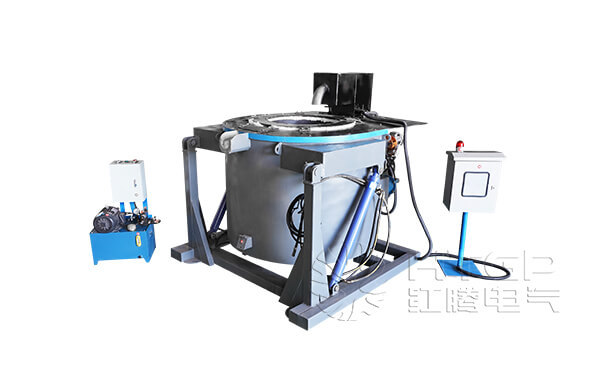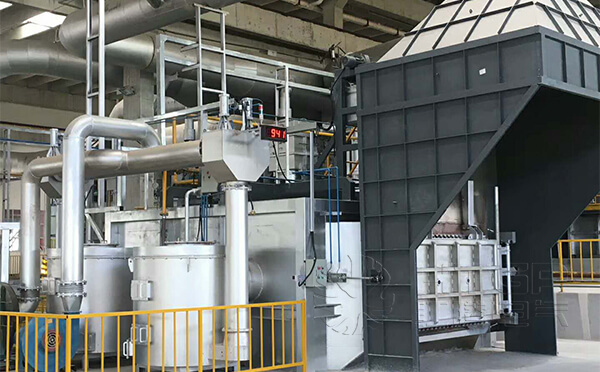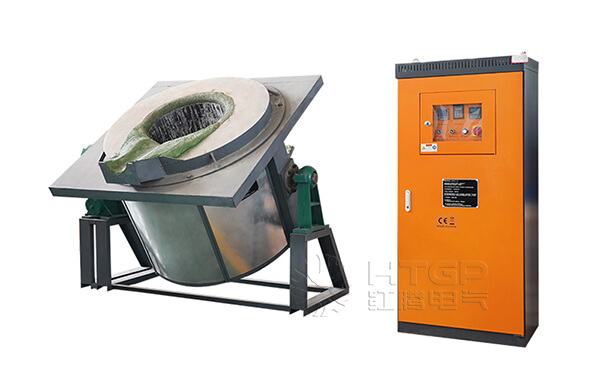What Fuel Can an Aluminum Casting Furnace Use?
Release time:
Sep 08,2023
source:
A casting furnace, also known as a foundry furnace or melting furnace, is a type of furnace specifically designed for melting and casting metal. It is used in foundries and metalworking facilities for various applications, including the production of castings and other metal components.
Casting Furnace
Casting furnaces are typically made of refractory materials that can withstand high temperatures. They are designed to provide a controlled environment for melting metals, allowing them to reach their liquid state for casting. The furnace may be fueled by various energy sources, such as electricity, natural gas, propane, or oil, depending on the specific requirements and available resources.
The furnace consists of a chamber or crucible where the metal is placed, heating elements or burners to generate the necessary heat, and a mechanism for controlling the temperature. The temperature inside the furnace can reach several thousand degrees Fahrenheit or Celsius, depending on the melting point of the metal being melted.
Aluminum Casting Furnace
An aluminum casting furnace is a specific type of casting furnace designed for melting and casting aluminum. Aluminum has a relatively low melting point compared to other metals, such as steel or iron, which makes it suitable for casting using specialized equipment.
The furnace chamber or crucible in an aluminum casting furnace is designed to accommodate the aluminum charge. The crucible is usually made of a refractory material, such as graphite or ceramic, which can withstand the high temperatures and chemical reactions involved in melting aluminum.
Aluminum casting furnaces may have features such as heating elements, burners, or induction coils to generate the necessary heat. The temperature inside the furnace can reach around 1,200 to 1,300 degrees Celsius (2,200 to 2,400 degrees Fahrenheit) to melt aluminum effectively.
Fuel Types for Aluminum Casting Furnace
Aluminum casting furnaces are typically made of refractory materials that can withstand the high temperatures required to melt aluminum. They are commonly fueled by natural gas, propane, or electricity, depending on the specific furnace design and available energy sources.
Natural Gas
Natural gas is a fossil fuel composed primarily of methane. It is a common fuel source for industrial applications, including aluminum casting furnaces. Natural gas is typically supplied through pipelines and offers several advantages.
Cost: Natural gas is often more cost-effective compared to other fuel sources. It is widely available in many regions, which can help keep the fuel costs relatively low.
Energy Efficiency: Natural gas combustion provides high heat output, making it efficient for melting aluminum.
Clean Burning: Natural gas combustion produces fewer emissions compared to other fossil fuels, such as coal or oil. It results in lower levels of pollutants and greenhouse gases, contributing to better environmental performance.
Propane
Propane is a liquefied petroleum gas (LPG) consisting mainly of propane molecules. It is commonly used in areas where natural gas pipelines are not readily available. Propane offers the following characteristics.
Portability: Propane is stored in tanks or cylinders, making it suitable for locations without direct access to natural gas pipelines.
High Energy Content: Propane has a high energy content, which means it can generate substantial heat when burned. This makes it effective for aluminum melting in casting furnaces.
Versatility: Propane can be used in various industrial applications beyond aluminum casting furnaces, such as heating, cooking, and fueling vehicles.
Electricity
Electricity is an alternative fuel source for aluminum casting furnaces. Instead of burning a fuel, electric furnaces use electrical resistance or induction heating to generate heat. Here are some key points about electrically powered furnaces.
Clean Operation: Electric furnaces produce no direct emissions during operation, resulting in a cleaner and potentially more environmentally friendly option.
Precise Temperature Control: Electric furnaces offer precise temperature control, allowing for accurate and consistent heating of the aluminum charge.
Flexibility: Electric furnaces can be easier to install and operate in certain environments since they do not require combustion or fuel storage. They also tend to have fewer maintenance requirements compared to fuel-burning furnaces.
Oil
While natural gas, propane, and electricity are commonly used fuel sources for aluminum casting furnaces, oil can also be used as a fuel option. An oil-fired aluminum casting furnace refers to a furnace that utilizes oil as the primary fuel for generating heat to melt aluminum. Here are some pros and cons of the oil-fired aluminum casting furnace.

High Heat Output: Oil-fired furnaces can generate high heat output, allowing for efficient and effective melting of aluminum. This enables faster melting times and higher production rates.
Fuel Availability: Oil is widely available and accessible in many regions, making it a viable fuel option for aluminum casting furnaces. It can be stored in tanks and readily supplied to the furnace.
Combustion Efficiency: Oil burners in these furnaces can achieve high combustion efficiency, resulting in effective heat transfer to the aluminum charge. This can lead to better fuel utilization and cost savings.
Environmental Impact: Oil-fired furnaces emit combustion by-products, including carbon dioxide (CO2), nitrogen oxides (NOx), and particulate matter. These emissions contribute to air pollution and can have environmental impacts, requiring appropriate emission control measures and compliance with regulations.
Maintenance Requirements: Oil-fired furnaces require regular maintenance to ensure proper operation. This includes cleaning and inspecting burners, filters, fuel delivery systems, and heat exchangers. Maintenance can add to the operational costs and downtime of the furnace.
Fuel Costs: The cost of oil as a fuel source can fluctuate based on global oil prices and market conditions. Depending on the region and availability, the cost of oil may vary, potentially impacting the overall operating expenses of the furnace.
In Summary
The choice of fuel source for an aluminum casting furnace depends on factors such as availability, cost, energy efficiency, environmental considerations, and specific requirements of the casting operation. Each fuel source has its own advantages and considerations, and the selection is based on a combination of these factors and the preferences of the casting facility.
Related News
We use optional cookies to improve your experience on our site, including through social media connections, and to serve personalized ads based on your online activity. If you refuse optional cookies, we will only use cookies that are necessary to provide you with the service. Privacy Statement
Leave your inquiry now, and get a systematic solution later.
We will contact you within one working day. Please pay attention to your email.




